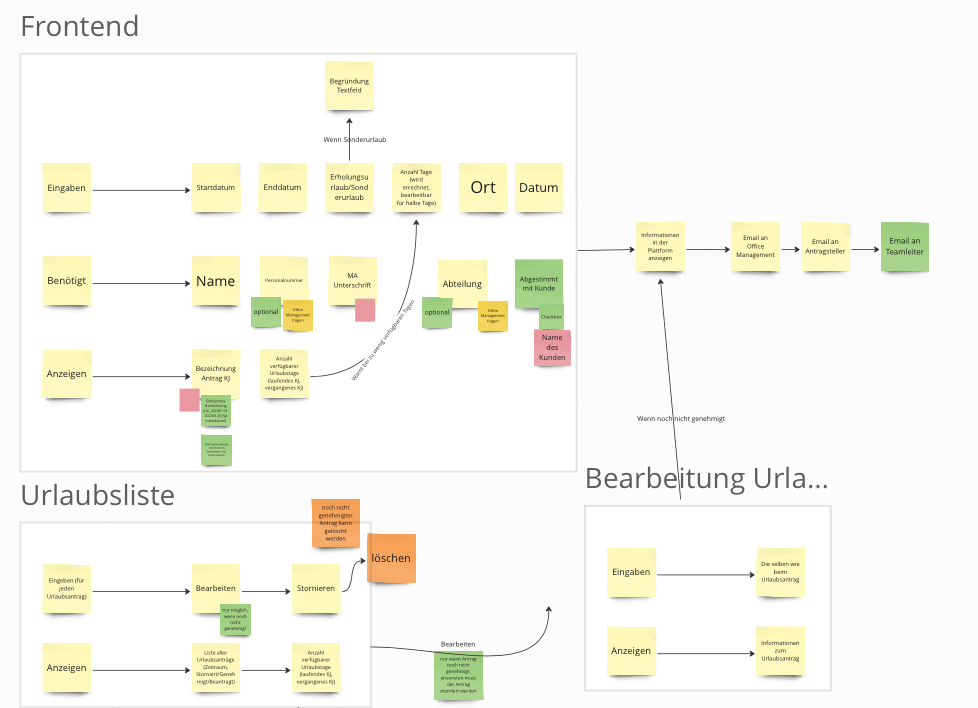
Ten Key Principles of Business Transformation
A conceptual model that puts the principles into perspective

Oliver Grasl
Tuesday, September 6, 2016
An overview of the key principles of business transformation and an introduction of its simple conceptual model that puts them into perspective
This blog is dedicating to business prototyping – business prototyping is a business architecture and design methodology that helps you to manage the complexity of business transformation efforts.
Now business transformation does not happen out of the blue, just for the sake of it – it happens because someone (perhaps you!) wants to transform their business into something better, either because that person has a great new business idea and is driving that transformation himself, or because external drivers are forcing him to do so (my post Why Change is Inevitable But Progress is Not discusses this in detail).
Therefore, in order to understand why business prototyping is useful and how it can help you to build a better business, we should take a step back and look at the process of business transformation in its entirety. Along the way, we will identify some key business transformation principles and put them into perspective.
Let me clarify what I mean by the term “business transformation” first: a business transformation is a significant change to how a company operates that has a high impact on its results. It affects the company’s business model (that is why it is a business transformation and not a technology transformation) and – mostly – this also entails transformations to the organization and the (IT-)technology that supports it.
In an ideal world, the ultimate objective of any business transformation should be to provide value to the company’s stakeholders, such as customers, shareholders and employees (though it has not been unheard of that some business transformations serve solely to satisfy the power-hunger of the person initiating and or sponsoring the transformation).
Given this definition, let us look at some examples of business transformation:
- Under this definition, the development and introduction of a new IT-driven business service count as a transformation: it will certainly affect the company’s business model (because it adds a new product and new revenue streams, perhaps even new markets or customer segments and new suppliers), it will most likely affect the organization (e.g. because a new organizational unit is needed that has to support the service) and the companies IT landscape will also change (because the service is IT-driven and needs IT-systems to support it).
- Under this definition, a pure change to the IT landscape does not count as a business transformation effort – e.g. if the IT service has already been established, and you decide to update the underlying software and hardware without impacting the business model or the organization, this does not count that as a business transformation. Such projects are mostly less risky and complex than full business transformations – this does not mean the principles below do not apply but they will be much easier to follow.
Business transformation efforts are typically organized as projects or – depending on the scale of the transformation – as programs of projects.
Business transformation is hard and many transformation efforts fail:
- some are canceled prematurely because they get lost in complexity on the way and are not able to deliver the required results
- others finish but the transformation does not create as much value for the business as was hoped.
I have been called into a number of failing transformation projects in order to get them back on track and sadly I have also seen some that have failed.
Surprisingly, none of the transformation efforts were failing because what they were trying to achieve was to grand or the people involved were just not bright enough – no, the transformations were failing because they were not respecting a few key principles, which first lead to poor communication within the transformation project, then to some wrong decisions which lead to a deterioration of performance and eventually in a loss of trust from the owners of the transformation.
And these owners ultimately decide to kill the transformation project and invest their time and money elsewhere. But not without causing pain and grief to those involved.
Which business transformation principles am I talking about?
Over the years I have developed a list of key principles that must be observed to ensure that business transformations are successful. I use it as a checklist. Not every principle is equally important every time and of course, my list has changed over the years.

I will give you my list first, before discussing each point on the list in more detail.
- Manage the Gap
- Tap into the Collective Brain
- Streamline the Decision Making Process
- Close the Loop, Get Feedback Early
- Know What to Observe and Measure
- Focus and Prioritise
- Never Lose Sight of the Big Picture
- Build Prototypes
- Think in Scenarios
- Learn and Adapt Continuously
I have a small conceptual model that helped me derive these principles and that shows how they influence each other – I will share it with you now, but will not explain the details until my next post.

Manage The Gap
In order to arrive somewhere, you need to know where you are going and where you are coming from.
Some leaders just like to focus on the vision (where they would like to be) and forget to think about where they are coming from. It is dangerous if you follow this practice because you are likely to overstretch – a vision that makes sense for Apple or Google will most likely not make much sense for your company.
So what you really need to do is to manage the gap between where you are now and where you would like to be.
This may sound obvious, but in practice, it is quite hard to know where you stand right now and even harder to define a vision everybody will buy into. Many transformations start with a vague idea and you need to invest quite a bit of time to clarify the purpose of the transformation and set concrete objectives. Part of the difficulty is that it is rarely one person who defines purpose and objectives but a whole set of stakeholders who need to be consulted. This leads to the second principle:
Tap Into The Collective Brain
Transformations are always driven by people and affect many people in different ways – understand their concerns, involve them in the creative process and always strive to create value for them.
In particular, talk to your stakeholders, internal and external domain experts and the transformation team on a regular basis.
You can rarely involve every individual all of the time. But you can try to involve representatives of each group some of the time. And you should, because it is unlikely that you or your transformation team can uncover all of the issues that have to be solved and solve them without their help.
Find creative ways of involving them and make sure you reap the most from their ideas.
Streamline The Decision Making Process
Once you understand the gap, you can make decisions about what to do. And then you should act.
This sounds very simple, but this often breaks down in large transformation efforts – one reason is that the people who identify and understand the gap may well not be the ones who make the decisions about what to do about it and almost never are the people who have to implement the action. In fact, there may be a whole chain of decision-makers before this leads to a concrete action that is implemented.
This can easily lead to a situation where the person implementing an action only has a vague idea of why he is doing this and how his action is going to contribute to the big picture.
Often the actions are then implemented half-heartedly and are not followed up on properly, because by this time the decision-makers are already discussing new, more pressing or more exciting topics.
You need to make sure that the decision process is streamlined, that those implementing the actions understand how they are contributing to the big picture and that you observe whether the action had the desired impact.
This leads to the next principle:
Close The Loop, Get Feedback Early
Any transformation involves a lot of uncertainty, about what the stakeholders really want, about the best solution for it and about how to get there.
The only way to deal with this is to get your stakeholders' feedback on an almost continuous basis. You need to close the loop – make small changes, check the results, get feedback.
Work in short, fast iterations. This sounds easy – but it is actually incredibly hard to do because it involves a high amount of coordination and also intellectual rigor.
Know What to Observe And Measure
I am sure you know the old adage “You cannot manage what you cannot measure”.
Fact is, the more complex your enterprise becomes the more things you could measure … you need to find out which factors are relevant to your success and monitor them effectively.
This is cumbersome not only because a number of things are hard to measure in principle – but it is also cumbersome because you need to reach an agreement on which things to measure and on what these things mean.
Focus And Prioritize
Because you are working iteratively, you need to focus on few things at a time and you need to focus on the right things.
Go for those changes that carry the highest risks first (that is changes with high uncertainty and high impact) but do not forget to reap low-hanging fruits (that is those changes that are easy to implement but also have a high impact).
Never Lose Sight of The Big Picture
The only way you can focus and prioritize is by understanding how everything fits together. Therefore you must never lose sight of what I call “the big picture”.
The big picture shows the main building blocks and how they fit together. It also contains the plan that shows the key steps you need to perform in order to put these building blocks together and a list of the key constraints, risks, opportunities and open issues you are facing. Maintaining a big picture is difficult to do in large-scale transformations because by necessity most of the transformation team will be focusing on concrete details.
Taking all these details and integrating them into a coherent big picture on a continuous basis requires both effort and discipline. But this effort is well invested because the big picture helps you to create shared understanding at an overall level and thus empowers the transformation team to make the right decisions at a detailed level.
The big picture is also the key instrument that helps you to tap into the collective brain and delegate the right tasks to the right people.
Build Prototypes
Business ideas and business models can be very abstract and hard to understand, so can innovative services and even consumer goods.
Prototyping is about making these ideas more tangible, thus opening them to intense, creative discussion and ultimately to improvement.
Be imaginative about building prototypes – it is quite common to build prototypes of new products, unfortunately, the opportunity of prototyping business models and services is rarely used.
We use visual models, simulations, games and play-acting to do this. It helps make business ideas, business models and business services more tangible and ultimately get better feedback from important stakeholders much earlier.
Think in Scenarios
The world is complex and there is no way we can predict the future.
So do not bother trying.
But what you can do is to anticipate the future by thinking through alternative scenarios of what might happen.
And then prepare for each of these possible futures.
Thus you will be ready whichever turn your destiny takes.
Learn And Adapt Continuously
Every transformation effort is different.
Keep your eyes open, observe what is going on, think about what is going right and what is going wrong and do not be ashamed to adapt your transformation methodology or even your goals if necessary.
Make sure those learnings flow back into the collective brain – this will make you stronger and better with every iteration and ultimately more able to handle the next transformation, which will surely come.
Table of Contents
Services
Resources
All Rights Reserved.



